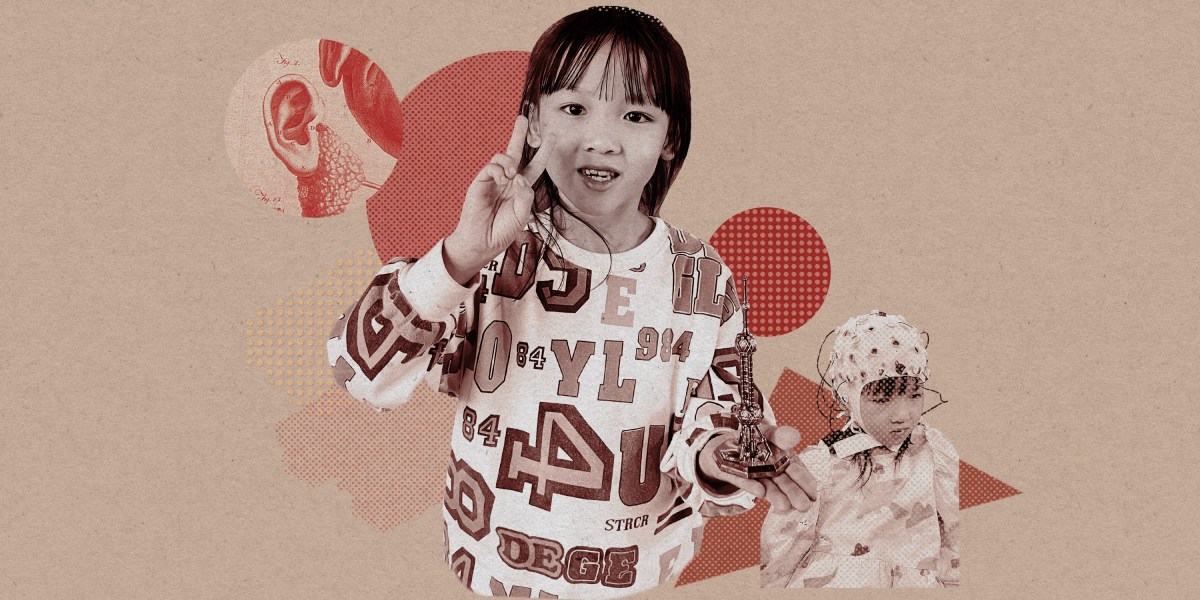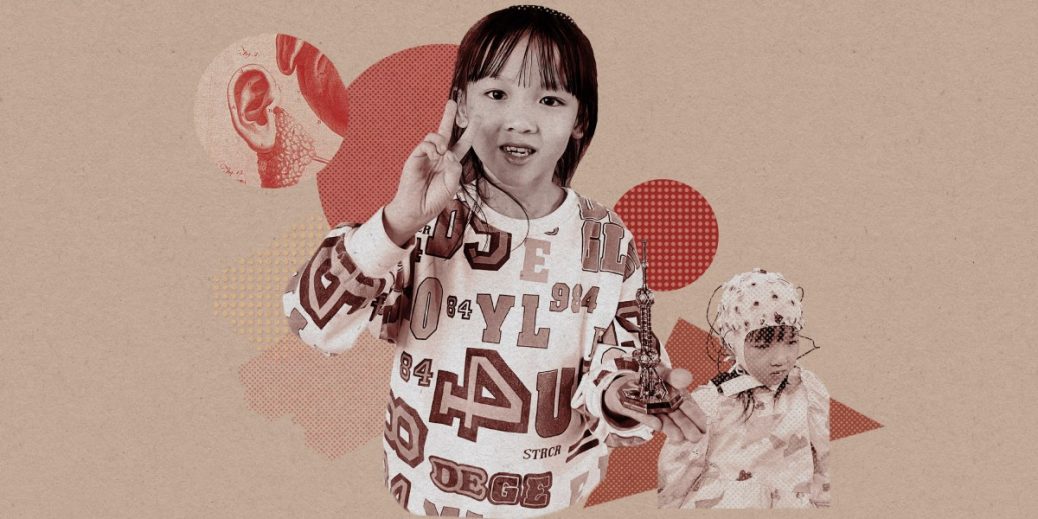
Shu also thinks the treatment can be made more potent. But already, he says, the children’s hearing improved, on average, from not hearing anything under 95 decibels (as loud as a motorcycle) to hearing sounds at 50 to 55 decibels—about the level of a regular conversation.
“They reach maybe 60% to 65% of normal hearing,” says Shu.
Can’t believe it worked
Some of the subjects are just toddlers, who can’t tell doctors anything about what their first experiences of sound are like. But their parents are seeing behavioral changes. According to Shu, one child, who had never spoken, has started to say “baba” and “mama” after the treatment. Shu believes children would ideally be treated at around one year of age, a key moment for speech development.
Yiyi is older, and like several of the children in the trial so far, she had previously received a cochlear implant, an electronic device that uses a receiver and electrodes to stimulate hearing by tapping directly into the main auditory nerve. With the implant in her right ear since she was two, Yiyi had already learned how to speak, although her mother says that when she disconnects it (the receiver and battery are external), “she can’t hear anything at all.”
That changed after the treatment, which was put into her other ear. It was only weeks later that Yiyi could hear naturally from that ear. Her mother notices that she sometimes disconnects her implant while playing with the neighbors.
“When I first heard about the trial, at first I didn’t believe it was real. I asked some audiologists, and they also said it might not be real,” she says. But after she traveled to Shanghai and met Shu and other doctors, she decided to enroll her daughter. “I still can’t quite believe that it worked,” she says.
Chen believes that gene therapy could offer better hearing than what can be achieved with an implant. “Cochlear implants are the most successful neural prosthesis ever developed,” he says, but they have limitations. With an implant, Chen says, “you may hear the music, but the nuance is totally gone—they just hear the beat. We hear wind in the trees and birds singing, but they can’t. So the goal for everyone has been how to reverse hearing loss.”
The decision to target Yiyi’s specific type of deafness was not an accident. Auditory hair cells respond relatively well to gene therapy, easily taking up new DNA. And they don’t grow or get replaced during a person’s life. This is a reason why very loud noises can lead to permanent hearing loss: they can kill the hair cells. But it also means that if a replacement gene is added to the cells, it could remain active for a lifetime, although Shu cautions it’s unknown how long the effect will persist.








Recent Comments